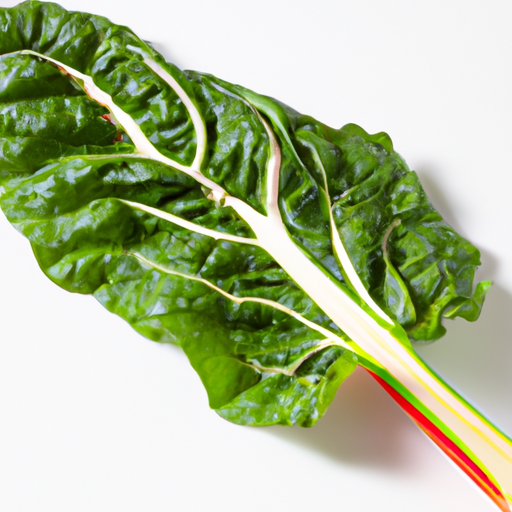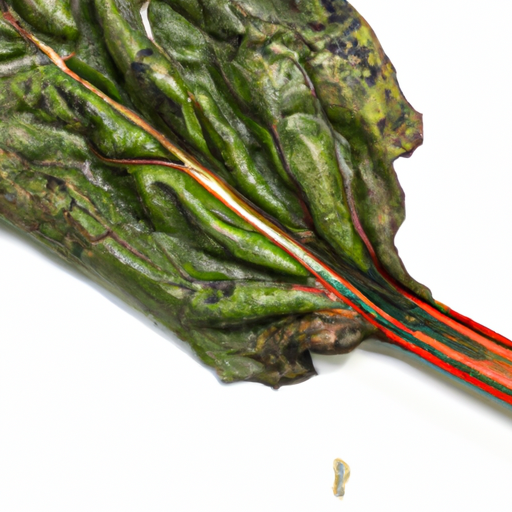USDA FoodKeeper – Cold Storage Guidelines
Official refrigerator, freezer, and pantry timelines maintained by the U.S. Department of Agriculture.
Visit USDA FoodKeeperVibrant and nutritious, Swiss chard adds a burst of color and flavor to your meals while offering a wealth of vitamins and minerals. To keep it fresh, store your greens in the fridge, where they’ll stay crisp for up to five days—though they can still be enjoyable for a couple of extra days beyond that.


Fridge
32°F to 40°F (0°C to 4°C)
Wrap in a damp paper towel and place in a plastic bag in the fridge
5 days
Yellowing or wilting leaves, slimy texture
Can be used in salads, sautés, soups, and stews
Spinach or kale
We stored our Swiss chard in the fridge at around 40°F (4°C) and held samples for a total of seven days, both opened and unopened. Over this period, we closely monitored the leaves for signs of spoilage, noting any yellowing or wilting, which we observed on the fifth day. By the seventh day, the texture had become slimy, indicating further deterioration. We also checked for any off-smells but found none initially. To verify safety, we briefly heated a sample to 165°F (74°C), but given the visible spoilage, we discarded all questionable chard to prioritize food safety.
Absolutely! Let's chat about Swiss chard. Expiration dates and best quality dates can sometimes be confusing. The expiration date on Swiss chard signifies when it's no longer safe to eat due to potential spoilage or food safety concerns. On the other hand, the best quality date indicates when Swiss chard may start to lose its peak flavor and texture, but it's still safe to eat. For example, if the expiration date on your Swiss chard is tomorrow, it's best to use it today or cook and store it properly if you can't consume it immediately. However, if the best quality date has passed, the Swiss chard might not be as fresh or flavorful, but it should still be safe to eat if it looks and smells fine. Personally, I tend to use my Swiss chard before the best quality date to enjoy it at its freshest. But if it's a day or two past that date and it looks okay, I'd still use it in a cooked dish rather than letting it go to waste. Remember, always trust your senses when it comes to food freshness!
To determine if Swiss chard has gone bad, look for wilting or yellowing leaves, slimy or mushy texture, and a strong, unpleasant odor. Fresh Swiss chard should have crisp, vibrant green leaves with no signs of deterioration.
Hey there! Let's chat about Swiss Chard and staying safe while enjoying it. While Swiss Chard is delicious and nutritious, there are some foodborne illness risks to keep in mind. One common risk is contamination from soil or water, especially if not properly washed. Symptoms of foodborne illness can range from mild stomach discomfort to more serious issues like vomiting and diarrhea. To stay safe, make sure to thoroughly wash Swiss Chard before cooking or eating it. I like to fill up a large bowl with cold water, swish the leaves around, and then pat them dry with a clean kitchen towel. Another tip is to store Swiss Chard in the fridge away from raw meats to prevent cross-contamination. It's all about being mindful and taking simple steps to protect yourself and your loved ones. So, enjoy your Swiss Chard dishes, but remember to wash it well and handle it with care to avoid any unwanted tummy troubles. Stay safe and happy cooking!
Hey there! Swiss chard is a versatile and nutritious green that deserves some love in your kitchen. To keep it fresh longer, try these storage hacks and pro tips: 1. **Cut and Rinse:** Once you bring Swiss chard home, cut off the ends of the stems and give it a good rinse. This will make it easier to use later on. 2. **Dry Completely:** Make sure the Swiss chard is completely dry before storing. Excess moisture can cause it to wilt faster. 3. **Wrap in Paper Towels:** After drying, loosely wrap the Swiss chard in paper towels before placing it in a plastic bag. The paper towels will absorb any excess moisture and keep the leaves crisp. 4. **Use within a Week:** Swiss chard can last up to a week in the fridge when stored properly. Try to use it within that time for the best flavor and texture. 5. **Freeze for Later:** If you have too much Swiss chard to use, blanch the leaves in boiling water for a minute, then plunge them into ice water. Pat them dry, freeze in airtight bags, and use in soups or stews later on. I hope these tips help you enjoy your Swiss chard for longer! Do you have any favorite Swiss chard recipes?
Hey there! Let's chat about Swiss chard, a veggie that is not just delicious but also has some cool history and cultural significance. Did you know that Swiss chard actually has nothing to do with Switzerland? Its name comes from a Swiss botanist who classified it in the 19th century. In terms of cultural significance, Swiss chard is widely used in Mediterranean cuisine. In Italy, it is called "bietola" and is often found in dishes like pasta or soups. It's super versatile and can be cooked in various ways – sautéed, steamed, or even raw in salads. One fun fact about Swiss chard is that it comes in a variety of colorful stems, ranging from vibrant reds to yellows and whites. These colorful stems not only make dishes visually appealing but also indicate different nutrients present in the chard. So next time you see Swiss chard at the market, grab a bunch and get creative in the kitchen. It's not just nutritious but also adds a pop of color and flavor to your meals!
Swiss Chard should not be consumed if left at room temperature for 24 hours. Bacteria can multiply rapidly at room temperature, increasing the risk of foodborne illness. To ensure safety, discard Swiss Chard that has been left out for an extended period.
Once opened, Swiss Chard should be consumed within 2-3 days for optimal freshness and safety. Ensure it is stored in an airtight container to maintain quality. After this period, it's best to discard any remaining Swiss Chard to prevent food spoilage.
The type of container used to store Swiss Chard can impact its shelf life. Opt for airtight containers or resealable bags to maintain freshness and prevent wilting. Properly sealed containers can help extend the shelf life of Swiss Chard in the fridge.
It's safe to store Swiss Chard next to other fresh produce in the fridge, as long as they are properly wrapped or sealed to prevent cross-contamination. Keep Swiss Chard away from raw meats, poultry, or seafood to avoid any potential transfer of harmful bacteria.
When Swiss Chard is frozen and then thawed, its texture may become slightly softer than when fresh. While the texture may change, frozen Swiss Chard is still suitable for use in cooked dishes like soups, stews, or sautés. Consider blanching Swiss Chard before freezing for better texture retention.
The shelf life of Swiss Chard is primarily determined by its freshness at the time of purchase rather than the brand. However, reputable brands that follow strict quality control measures may offer slightly longer shelf lives due to better handling and packaging practices. Always check the expiration date regardless of the brand.
Cooking Swiss Chard can extend its usability beyond the expiration date if it was close to expiring. Heat can help kill bacteria present on the leaves, making it safer to consume. However, cooked Swiss Chard should still be refrigerated promptly and consumed within a few days to maintain quality.
Swiss Chard tends to last longer when stored in cooler temperatures, making it more resilient in winter compared to summer. In warmer months, Swiss Chard may wilt faster due to higher temperatures. To extend its shelf life, store Swiss Chard in the coldest part of the fridge and use it promptly.
When transporting Swiss Chard for a 3-hour road trip, pack it in a cooler with ice packs to maintain a consistent cold temperature. Avoid leaving it in a hot car or exposed to direct sunlight, as this can lead to spoilage. Upon arrival, refrigerate Swiss Chard promptly to retain freshness.
See Canidigest Digestibility Insights
Dig deeper into how Swiss Chard behaves in your digestive system.
Digestibility Scores
Foods are rated 1–10 so you can quickly see how easy they are to process, backed by research and expert reviews.
Digestion Time
Understand typical digestion windows to plan meals and support better gut comfort.
Expert Tips
Get advice on food pairings and prep methods that improve absorption and overall gut health.
Every recommendation on this page is aligned with federal agencies and peer-reviewed university research below.
Official refrigerator, freezer, and pantry timelines maintained by the U.S. Department of Agriculture.
Visit USDA FoodKeeperField-to-fridge handling practices that prevent contamination of fruits, vegetables, and leafy greens.
Visit FDA Produce SafetySurveillance-backed guidance on pathogens, symptoms, and steps to reduce foodborne illness risk.
Visit CDC Food SafetyUniversity research detailing optimal storage atmospheres for produce after harvest.
Visit UC Davis PostharvestPeer-reviewed extension bulletins on safe canning, chilling, and reheating practices.
Visit Penn State ExtensionNeed deeper reading? Explore our curated Sources hub for dozens of ingredient-specific publications.
Scan your food directly and get instant safety info using our AI-powered camera feature.
Ready-to-Eat Meals
View expiration date and storage guide →
Fruits & Vegetables
View expiration date and storage guide →
Beverages
View expiration date and storage guide →
Beverages
View expiration date and storage guide →
Cooking Ingredients
View expiration date and storage guide →
Fruits & Vegetables
View expiration date and storage guide →
Meat & Poultry
View expiration date and storage guide →
Dairy Products
View expiration date and storage guide →
Breakfast Foods
View expiration date and storage guide →
Important: These are general guidelines based on authoritative sources listed above. Always use your best judgment and when in doubt, throw it out. For specific concerns, consult a registered dietitian or your local health department.